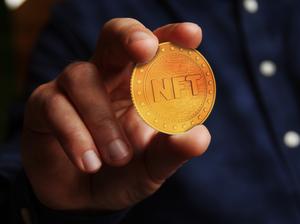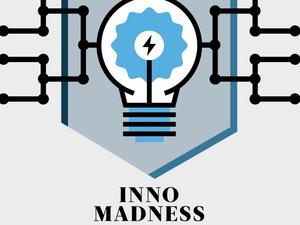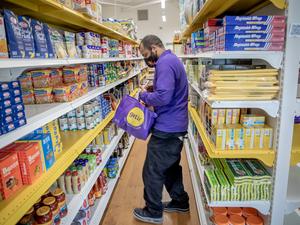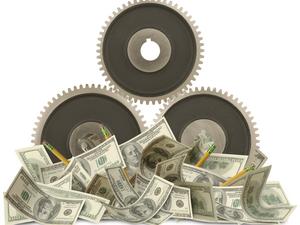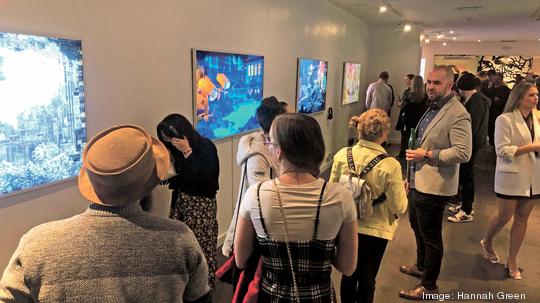
At an art gallery on Boston’s Newbury Street, the usual photographs and paintings have been replaced by digital screens with animated images.
Pellas Gallery is now home to “New Horizons,” an NFT exhibition showcasing work from digital artists around the globe. The gallery, which bills its event as Boston’s first NFT exhibition, runs through April 23 and is located at 114 Newbury St.
The exhibit is curated by 26-year-old, Massachusetts-born Alex Ness, an NFT creator who found his way into this fledgling industry through 3D and digital design.
After posting his designs on Instagram in college, he started getting requests to make concert visuals. During his senior year, he missed three weeks of classes to work on the Imagine Dragons concert tour. After college, he took on longer, bigger gigs for artists like Diplo and Travis Scott. Then, in 2020, the concert industry shut down.
“That’s when I also found NFTs and when I started releasing my artwork to collectors,” Ness said. “(I) kind of changed from being a working artist, like a commercial working artist, into just being myself and making art that I want to do.”
Ness is one of 10 artists whose work is on display and for sale at Pellas Gallery.
A new type of gallery
At Pellas Gallery, attendees cluster around 10 large digital screens, often taking in the exhibits through their own personal devices as they snap pictures and record video.
There’s laughter and chatting and pointing at hidden details in the artwork. Every so often, a person steps forward to put on a pair of headphones. Each exhibit has its own soundtrack to accompany the animated, looped images on the screen.
Ness’ piece features a multi-colored pinball machine accompanied by techno music. In another NFT, a pair of robots fish in a shimmering blue stream. Headphones add in the sounds of moving water, a bobber popping up and down and robots chirping.
Unlike traditional art exhibits, Ness said, the gallery is not keeping a huge portion of the art sales, and the artists can choose who buys their pieces. The NFTs can be viewed and purchased online or at the Pellas Gallery. They range in price from $3,500 to $17,500 per edition.
“There’s no reason we have to just destroy the old art gallery mindsets,” Ness said. “It’s kind of the old school being involved, but with a newer mindset.”
The future of NFTs
For the uninitiated, NFTs, or non-fungible tokens, can be easily misunderstood, Ness said. He admits that he didn’t quite understand the hype when he learned about them. But after some research, he now sees the value in NFTs.
“All it is is a digital certificate of authenticity,” Ness said. NFTs can be treated like collectable art and be traded and sold, Ness said, and act as a “digital Rolex” that gives buyers credibility in the tech and cryptocurrency industries.
NFTs can be purchased for less than $50 or for millions, Ness said. It all depends on the artist.
“We’re seeing this big kind of switch where the NFT world is kind of emulating the traditional art world exactly,” he said. “The main way of seeing what is good art or what is valuable is just based on who’s creating it.”
As NFTs become more popular, the criticism of them is growing. NFTs are largely bought and sold in marketplaces like Ethereum, where one transaction can use as much electricity as the average U.S. household does in five days. Ethereum has promised to go green, committing to use around 99.95% less energy in a blog post last summer. It says this change will happen in 2022.
A 2022 study from the U.S. Treasury Department also raised concerns about money laundering through NFTs.
Ness sees NFTs following the path set by the dot-com craze. Even though he thinks we’re in a bubble, he doesn’t see NFTs losing all their value and disappearing after it bursts.
“That’s not to say that after that crash happened that all dot coms went to zero and were worthless, right? We still have all these huge websites that were started in that time,” Ness said. “I see it very much like that where we’ve hit this point of no return.”
